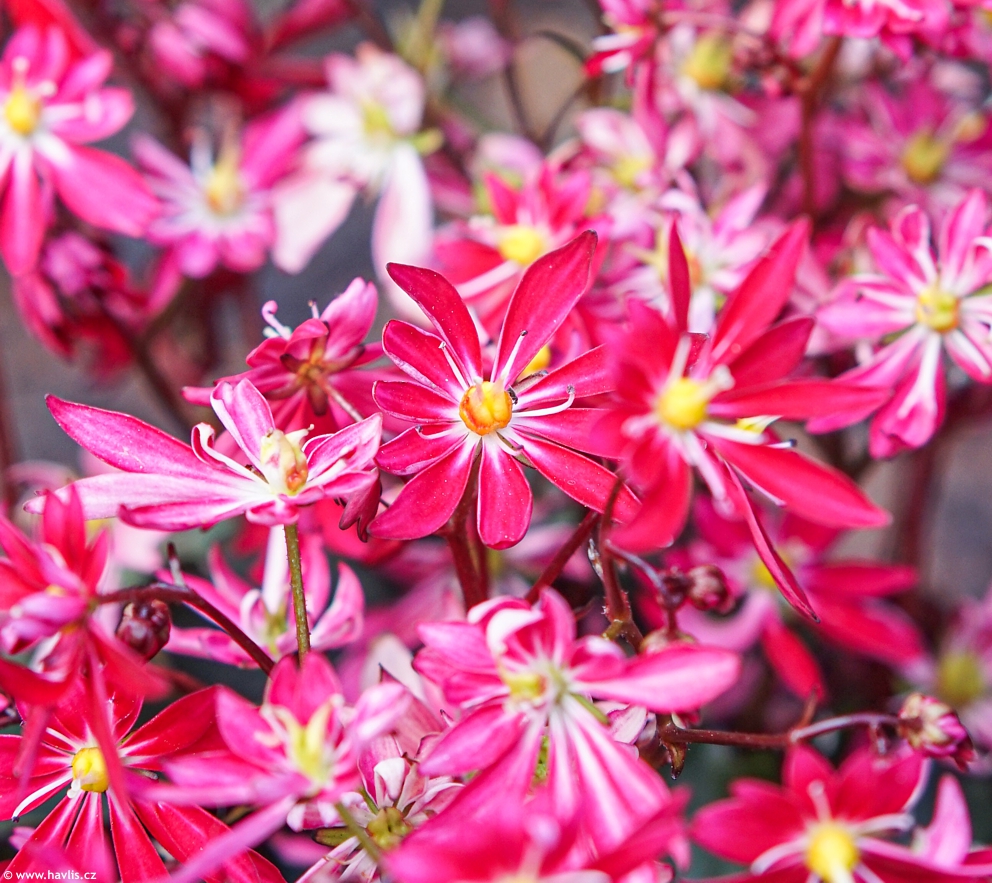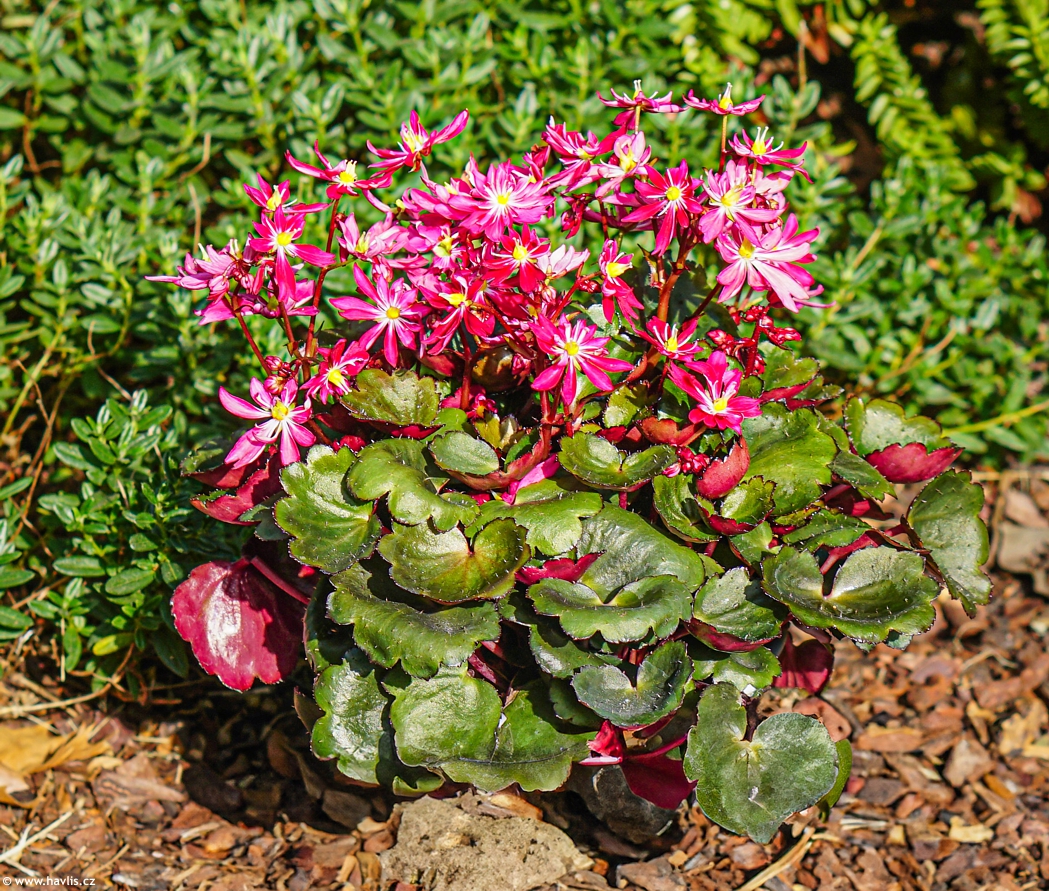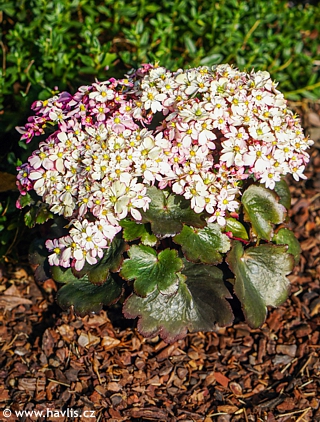Saxifraga cortusifolia 'SH 1934' DANCING PIXIES® TALLY autumn saxifrage
size/type
low or groundcovering,low perennial
usual height
0,1-0,2m
usual width
0,3-0,4m
leaves
deciduous broadleaf
colour of leaves
flowers
showy
colour of flowers
blooming time
September-October
location
semi-shade / partial sun
soil type
acidic (peaty) to neutral
soil moisture requirements
evenly moist but well-drained
USDA zone (lowest)
7 (down to -23°C)
winter protection
for zone 5+6

for zone 7

categorized
Saxifraga
Saxifrage is a large genus and individual species can vary one from another so much that you would hardly believe that they are in any way related to the popular and possibly most famous moss saxifrage hybrids. Autumn saxifrage is unique not only due to its appearance but also its blooming season: September and October. It comes from Japan and despite its good performance in most milder parts of Europe it is still very little known. Honestly, more than anything like saxifrage it resembles kalanchoe, cyclamen or heuchera. There had not been many varieties to choose from until 2020 when German breeder of hellebores Josef Heuger introduced his fantastic series called DANCING PIXIES®. It consists of 20 varieties, all of which are immensely beautiful, and they have female names all beginning with a letter T. Wonder why …Description of the plant:
TALLY is an autumn saxifrage variety from the DANCING PIXIES® series producing vibrant carmine red flowers from early September. They are almost star-shaped with uneven length of flower petals which are white closer to the throat and often have a white stripe running down the petal. Its deciduous leaves are almost rounded, shallowly lobed, dark olive green above and bright purple pink and glossy beneath. Plants are dense and slowly form larger and showy clumps.Autumn saxifrage is somewhat picky about loaction and soil type. It prefers partial shade or filtered sunlight with a maximum of 5 hours of direct sun. The soil has to be moist but well-drained, rich in organic matter, and preferably acidic which makes it and ideal companion plant to heath and heather, dwarf rhododendrons and azaleas or kalmias. For best results keep it mulched and water it during dry spells of spring and summer. Hardy to about -23 °C (USDA zone 4). NOT suitable for pots and dry rockeries.
Last update 16-11-2023
QUICK PRICE OVERVIEW
CURRENTLY SOLD OUT
WANT TO TRY A SIMILAR PLANT?

















